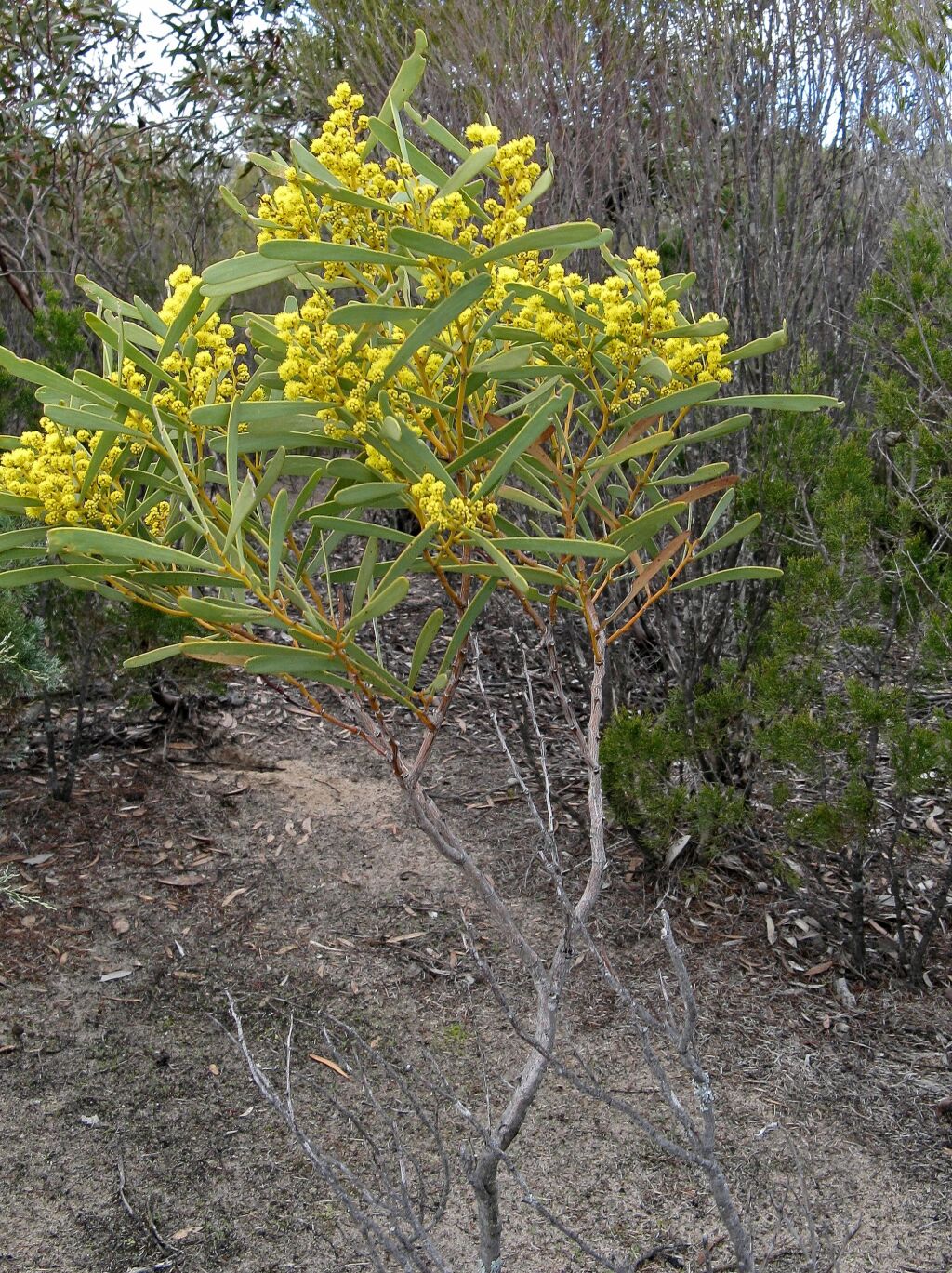Acacia hakeoides
A.Cunn. ex Benth. Hakea WattleBushy shrub or tree, usually to c. 4 m high; branchlets glabrous. Phyllodes narrowly oblanceolate, sometimes linear, sometimes upper margin kinked at gland, usually 4.5–12 cm long, (3–) 6–12 mm wide, glabrous, narrowed at base, apex obtuse; midrib often slightly eccentric, lateral veins longitudinally anastomosing; gland normally 1–2.5 cm above pulvinus. Racemes with rachis mostly 1–5 cm long, glabrous, drying dark brown to blackish; peduncles 2–5 mm long, stout, glabrous or subglabrous, drying dark brown to blackish; heads globular, usually 20–27-flowered, bright golden; bracteoles evident in buds, lamina more or less circular, dark brown to black and white-fimbriate. Flowers 5-merous; sepals united. Pods usually more or less moniliform, to 12 cm long, 4–6 mm wide, more or less thinly coriaceous-crustaceous, glabrous, very dark brown to black; seeds longitudinal, oblong to elliptic, 5–7 mm long, dull, black, aril clavate. Flowers Jun.–Sep.
LoM, MuM, Wim, VRiv, MuF, Gold, GGr, DunT. Also WA, SA, Qld, NSW. Scattered through western Victoria, growing in open-scrub or woodland on a variety of soils but commonly on sand or loam.
Frequently a multi-stemmed shrub or small tree which produces suckers if its roots are disturbed, sometimes forming dense thickets.
Specimens with linear phyllodes 3–4 mm wide occur scattered throughout the range and in Victoria are known from areas such as Muckleford and the Whipstick Forest. Another variant from the Whipstick Forest has long (11–15 cm) phyllodes, c. 35-flowered heads and pods which are less constricted between the seeds.
Putative hybrids between A. pycnantha and A. williamsonii from the Whipstick Forest may superficially resemble A hakeoides.
See notes under A. williamsonii and A. difformis.
Entwisle, T.J.; Maslin, B.R.; Cowan, R.S.; Court, A.B. (1996). Mimosaceae. In: Walsh, N.G.; Entwisle, T.J., Flora of Victoria Vol. 3, Dicotyledons Winteraceae to Myrtaceae, pp. 585–658. Inkata Press, Melbourne.
 Spinning
Spinning



